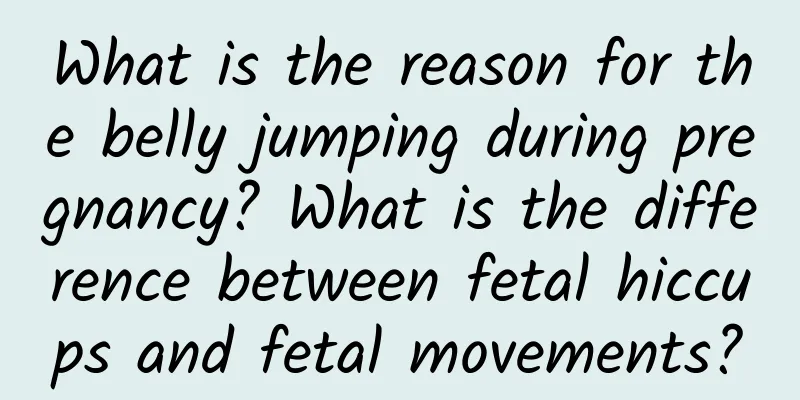What are the symptoms of postpartum thrombosis?

|
Postpartum venous thrombosis is mainly venous thrombosis. Women who have given birth need to actively prevent the occurrence of venous thrombosis. Otherwise, once infected with postpartum venous thrombosis, it will seriously endanger the physical and mental health of pregnant women. It is necessary to understand some symptoms of thrombosis after childbirth, which will help to immediately identify whether it is venous thrombosis after childbirth. So, what are the symptoms of blood clots after childbirth? The symptoms of venous thrombosis after childbirth include: dizziness usually occurs in the early stages of venous thrombosis after childbirth. It is a very typical symptom of venous thrombosis after childbirth, especially after waking up in the morning. When pregnant women are very tired, they are prone to dizziness. If dizziness occurs repeatedly for one or two days, or even five times, you must pay special attention to it. In addition to dizziness, symptoms of thrombosis after childbirth also include severe headaches in pregnant women, especially severe pain that occurs without any cause. Some pregnant women may also experience abnormalities such as drowsiness and coma when they have headaches. There is also a situation where the location of the headache and the feeling of pain are different from the past. These need to be treated in time. More serious symptoms of thrombosis after childbirth include: the pregnant woman's walking posture becomes abnormal, specifically she has no strength to walk, and she continues to tremble. There are also abnormal blood pressure and constant yawning, which are also data signals of venous thrombosis after childbirth. It is recommended that if a pregnant woman shows any of the abnormal symptoms mentioned above, she should seek medical treatment immediately. Postpartum venous thrombosis is a relatively common complication after childbirth. It is mostly caused by pregnant women staying in bed for a long time after giving birth and not engaging in strenuous activities, resulting in venous blood obstruction. In addition, it may also be related to the hypercoagulable state of the pregnant woman's blood. If venous thrombosis occurs in the lower limbs, it usually causes lower limb edema, varicose veins, skin color changes, and pain. If venous thrombosis occurs in the pelvic system, there may be edema, blood accumulation, tenderness, and skin color changes in the lower limbs. It is usually accompanied by severe abdominal pain, and some may be accompanied by fever and other symptoms. If venous thrombosis occurs in the deep veins, it can also reach the lungs of the pregnant woman through the blood circulation system and cause pulmonary embolism. If pulmonary embolism occurs, it may seriously endanger the life of the pregnant woman. Therefore, women should not stay in bed for a long time after giving birth, and should not stand for a long time. They should exercise appropriately, change different postures, accelerate blood circulation, and prevent the formation of venous thrombosis. |
<<: Postpartum anal prolapse symptoms pictures
>>: Can I eat tofu during the postpartum period?
Recommend
Kiss your baby? Beware of kissing sickness!
This is the 4227th article of Da Yi Xiao Hu Are y...
Get rid of the misunderstanding about breast cancer and prevent and treat it scientifically to stay healthy
Author: Liu Xinwei, The First Affiliated Hospital...
What is the difference between endocervicitis and cervicitis?
Women may suffer from various gynecological disea...
Which department should I go to if I have breast nodules?
If you have breast nodules, you should go to the ...
What are the common sense of female beauty?
In life, we often see women of the same age, but ...
Are children born with high blood pressure healthy?
Many pregnant women will experience some health p...
What medicine is good for ovarian cysts?
When women suffer from ovarian cysts, they still ...
Can taking birth control pills during ovulation prevent pregnancy?
Taking emergency contraceptive pills during ovula...
Unmarried woman has cervical inflammation
Gynecological inflammatory diseases are common pr...
What are the treatments for uterine fibroids?
Uterine fibroids are the most common benign tumor...
Is foot bathing good for the fallopian tubes?
Nowadays people's living habits are very irre...
What is the thing growing at the vagina?
Some female friends have found that there is a sm...
Normal amount of progesterone in artificial cycle
Progesterone is an important support point needed...
Diabetes is becoming more and more common among young people. Are you affected? | United Nations Diabetes Day
In our impression, diabetes and hypertension are ...
What to do if you have irregular menstruation and polycystic ovary syndrome
Ovarian cyst is a common gynecological disease, w...









